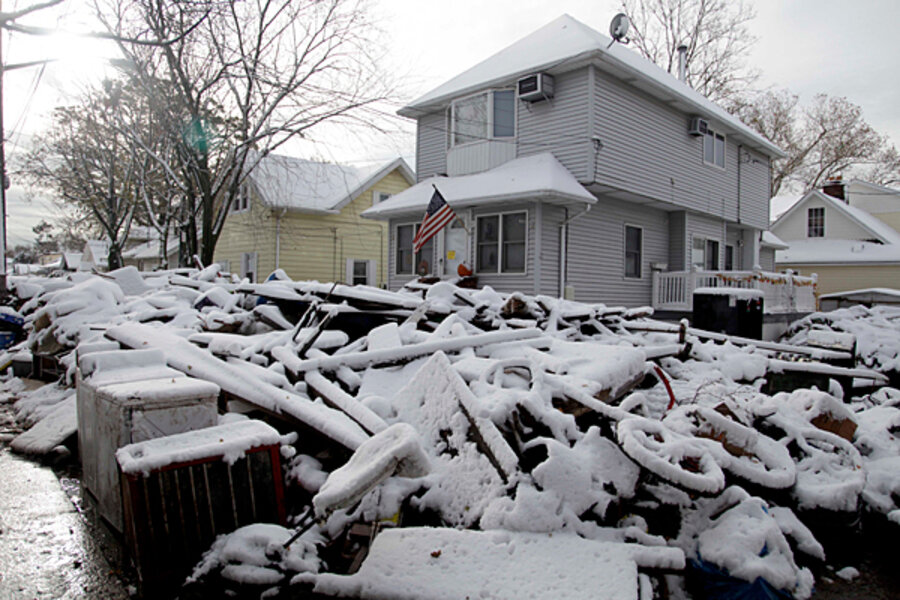Nor'easter darkens Sandy-struck New York, New Jersey. But sunshine is next.
Loading...
| Atlanta
Back-to-back storms that brought misery to millions in the Northeast over the past 10 days will finally relent and give way this weekend to clear skies and 70-degree temperatures – likely to lift spirits and boost morale for what promises to be a lengthy cleanup and recovery.
A week after superstorm Sandy barreled up the East Coast, a powerful nor’easter on Wednesday dumped up to a foot of snow on interior parts of New England and battered storm-wrecked coastal communities with up to 60 mile-an-hour gusts. By Thursday, it began to recede out into the Atlantic. On its coattails are riding high clear skies and warm temperatures for most of the region.
“Things are pretty much winding down,” says Charlie Foley, a National Weather Service meteorologist in Taunton, Mass. “The storm itself is offshore heading for Nova Scotia, so its impact on us will be minimal – just some lingering rain showers and wind advisories until about 3 p.m. [Thursday] afternoon. But all in all, it’s pretty much history.”
Hastily reinforced dunes along the New York and New Jersey coast helped curtail any further flooding in the region from the nor’easter, and overall damage from the second storm was minimal, authorities say. But for many of those who lost power and even homes in superstorm Sandy, the cold, wind-driven rain and snow was another blow.
"Kind of laughing about it at this point," Long Island resident Danny Arnedos told NBC News. "To go from a hurricane to a nor'easter and driving in the snow in 10 days is pretty unbelievable."
Officials like New Jersey Gov. Chris Christie (R) called the nor’easter a sucker punch after Sandy killed at least 110 people and caused tens of billions of dollars in flood and wind damage last week, leaving millions of people without power in near-freezing temperatures. Many Sandy victims who had huddled under blankets for days before having their power restored this week saw lights fail again on Thursday. In New Jersey, some 40,000 customers who had just had power restored lost it as the nor’easter thundered against a weakened power grid and fragile coastal defenses.
All in all, the nor’easter caused about 100,000 new power outages, leaving about 700,000 homes still without power in the region.
Before steering off the coast on Thursday, the nor’easter also dropped record snows for this time of year in Central Park in New York; Newark, N.J.; and Bridgeport, Conn. The wet snow won’t linger, however.
“Into early next week, we’re going to be on the return side of the high-pressure system that’s moving over, which means we’ll be importing some milder temperatures” from the southern United States, Mr. Foley says. “That means the snow will be gone.”






